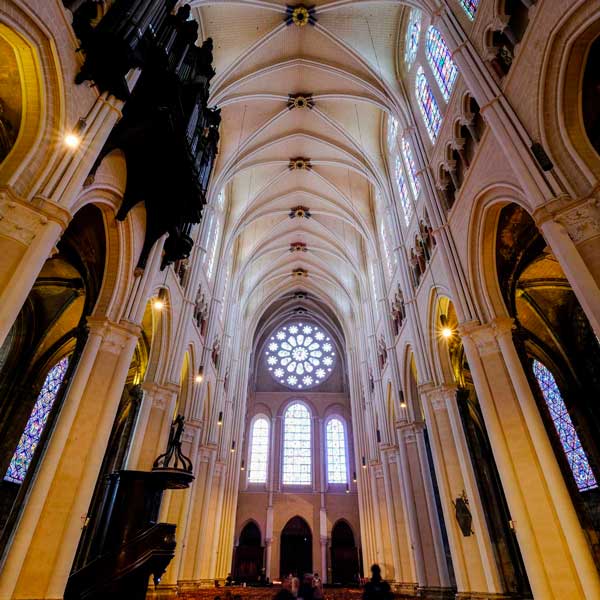“Preserving the totality of the windows with which it was equipped in the XIIIth century”; “Nearly three quarters of the windows installed in the XIIIth century”; “More than 80% of the authentic glasswork”; “A large majority of the windows have survived”; (…)
Here is what we read here and there…
There is no doubt that only Chartres cathedral – among the great religious buildings of the Middle Ages – can give rise to such considerations. Elsewhere, the preserved glassworks are always the subject of a minority. Overall, in the case of Chartres, all of the windows date from the initial construction site – between 1200 and 1250.
As you can see, some destruction has occurred here and there – despite the fortunate chance that the monument has been spared more extensive damage. The subject – by nature unattractive – gives rise to the approximations that we have cited above.
We have therefore decided to make a methodical inventory of the situation here.
(…suite)
On the 7 lancets of the roundabout:
- 7 are entirely original (even if the repairs could have been rather heavy in localized points).
On the 3 lancets of the west facade:
- 3 are entirely original (with a lot of resumption on the faces – and some restored areas, like the child Christ at the top of the central lancet).
On the 10 lancets of the lateral facades:
- 10 are entirely original.
On the 3 roses of the facades:
- 3 are almost entirely original (on the south side – several panels appear to be late XIXth century restitutions).
Of the 68 high windows:
- 57 are at least partially original.
11 windows are missing, corresponding to:
– two grisailles in the north transept – late 13th century with a possibility that they are grisailles installed from the beginning;
– a Saint Anne – made by Coffetier in 1880;
– eight grisailles on the sides of the upper choir – 1935 and 1936. - 53 are entirely original.
Four stained glass windows are missing:
– that of Saint Symphorien – some panels redone in 1878;
– that of Saint Peter;
– that of Saint Paul – borders restored in 1883;
– the one of the Nativity/Flight into Egypt – borders restored in 1923.
In detail, the restorations will undoubtedly show targeted restitutions.
Of the 34 high roses:
- 32 are entirely original.
Two roses are missing, corresponding to:
– a Saint Anne from the north transept – 1880;
– a grisaille from the same north transept – late 13th century – see above.
To your calculators!
Assume – which remains to be proven – that grisailles were not planned before the consecration.
Omit that all the listed windows – which we have thus classified by category – are of very variable sizes.
84.5% of the windows have an authentic base.
79% are completely authentic, if we exclude the restorations of use.
Who can say better?
Also discover…
